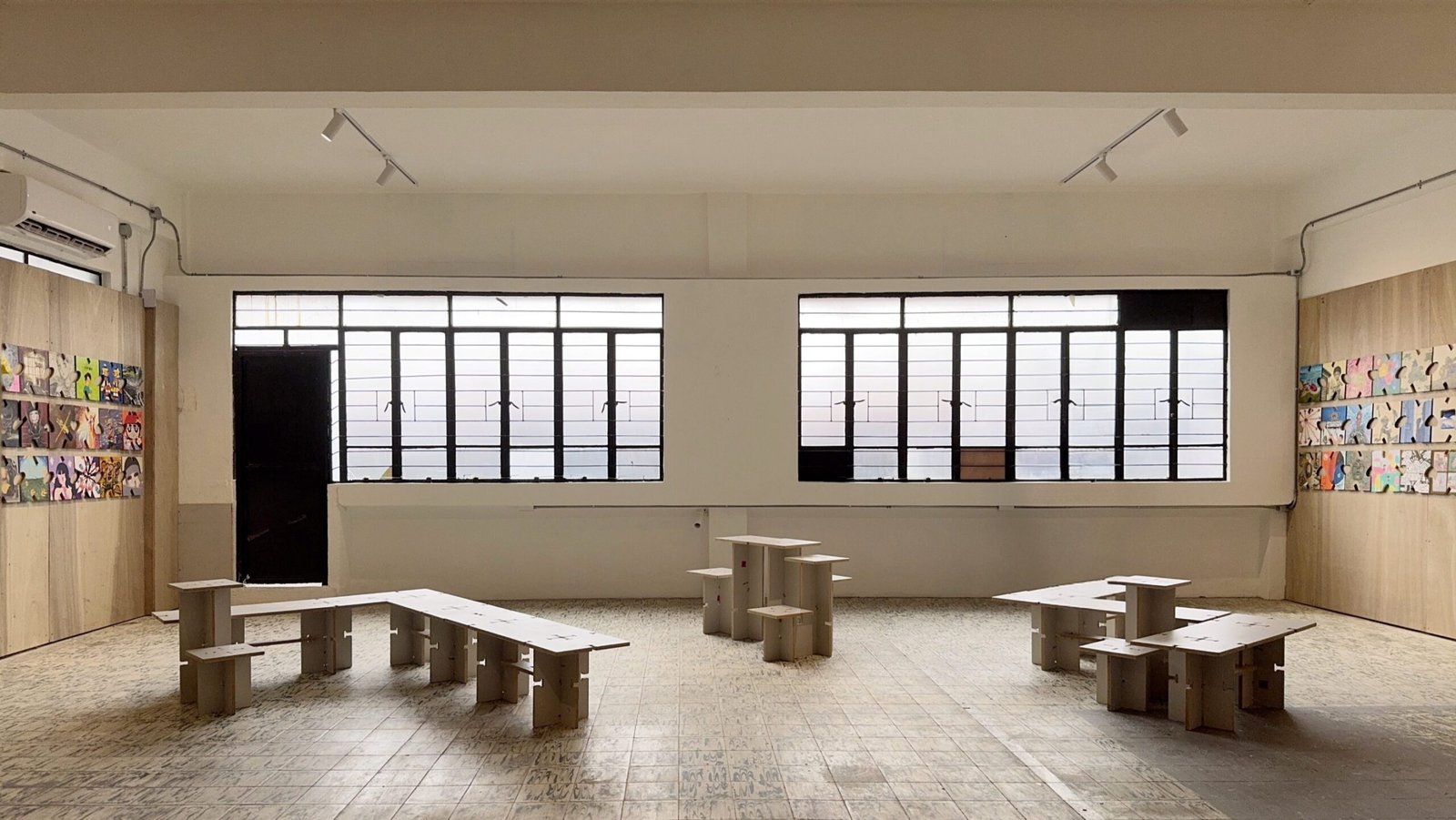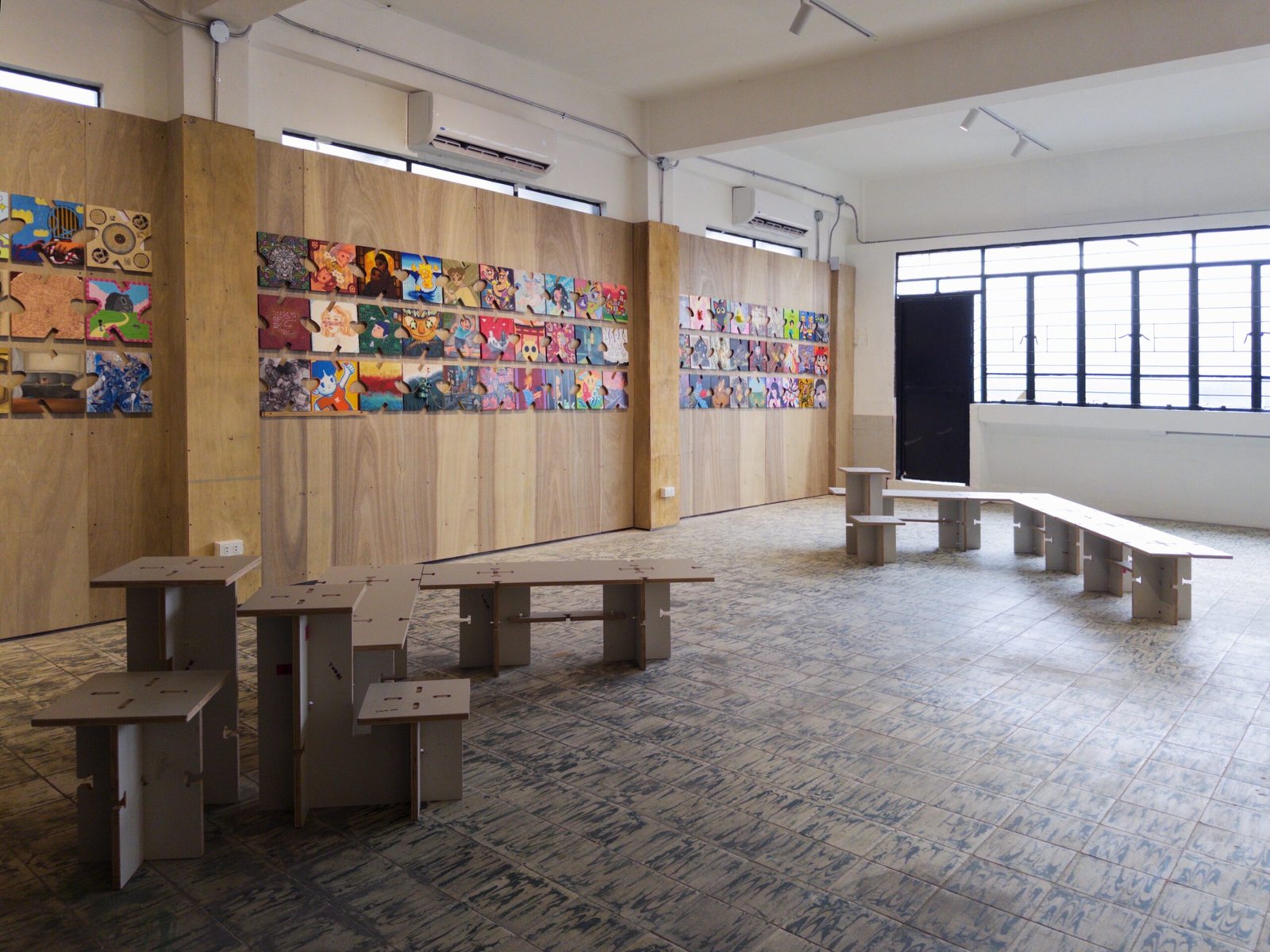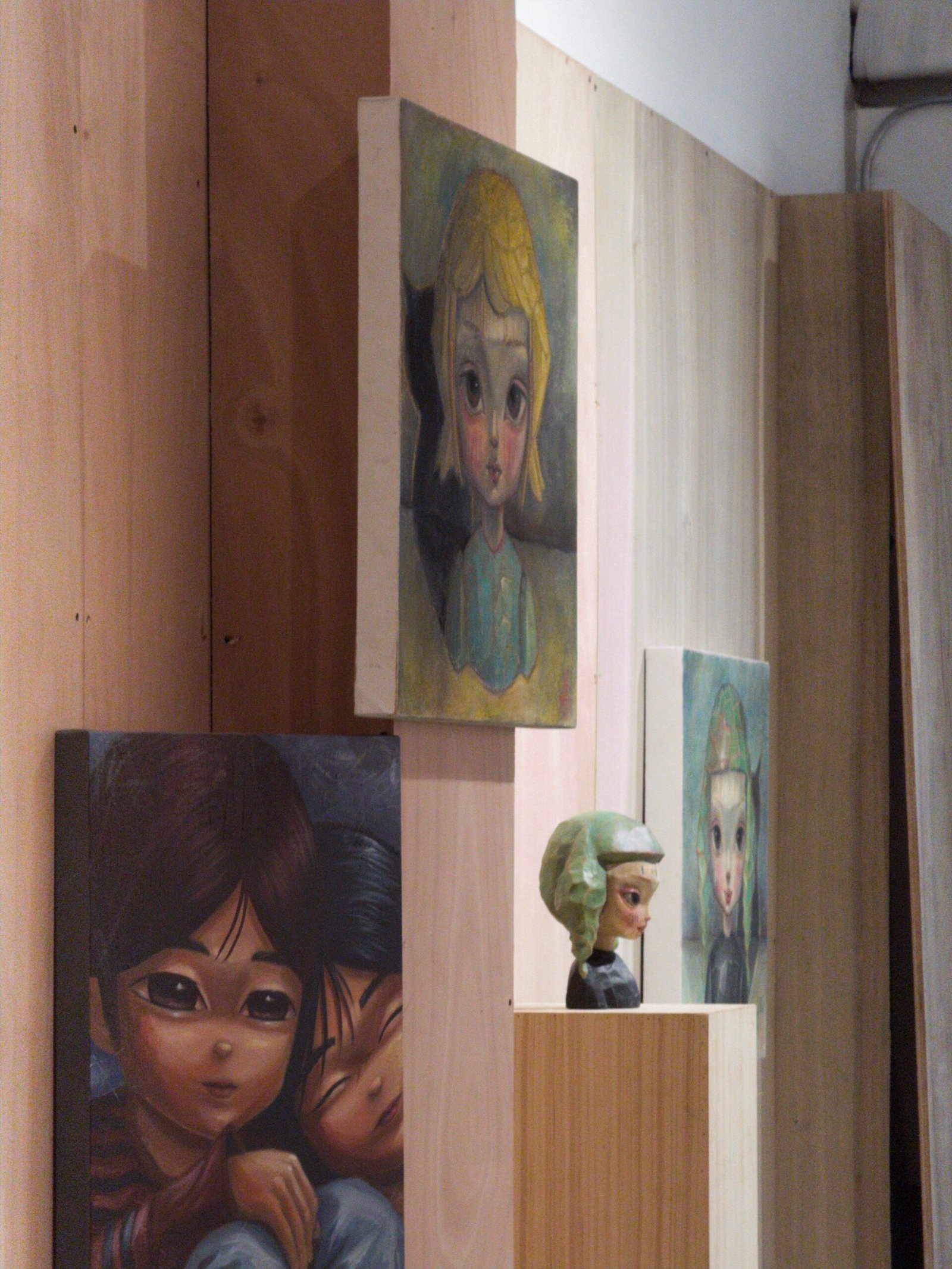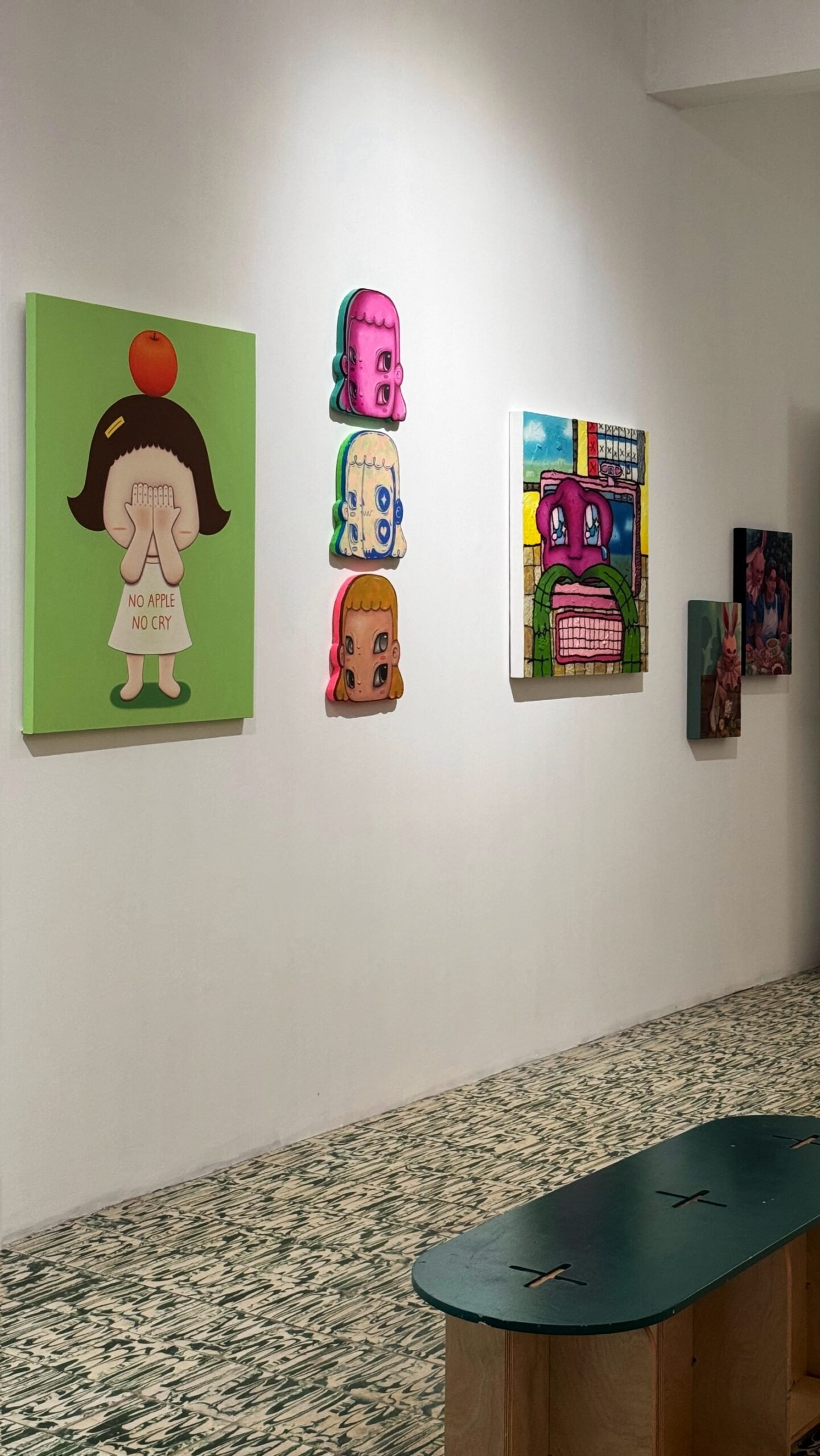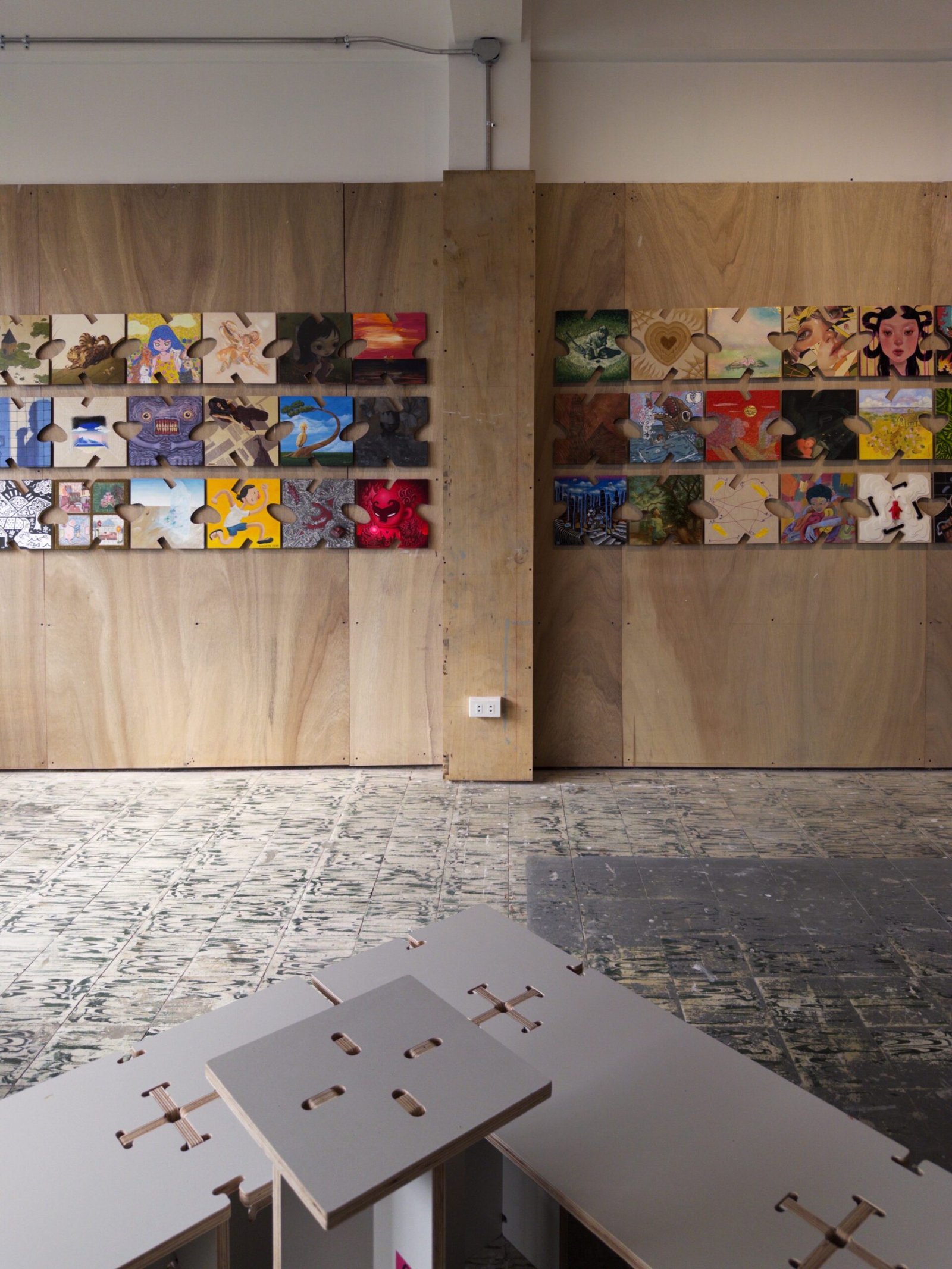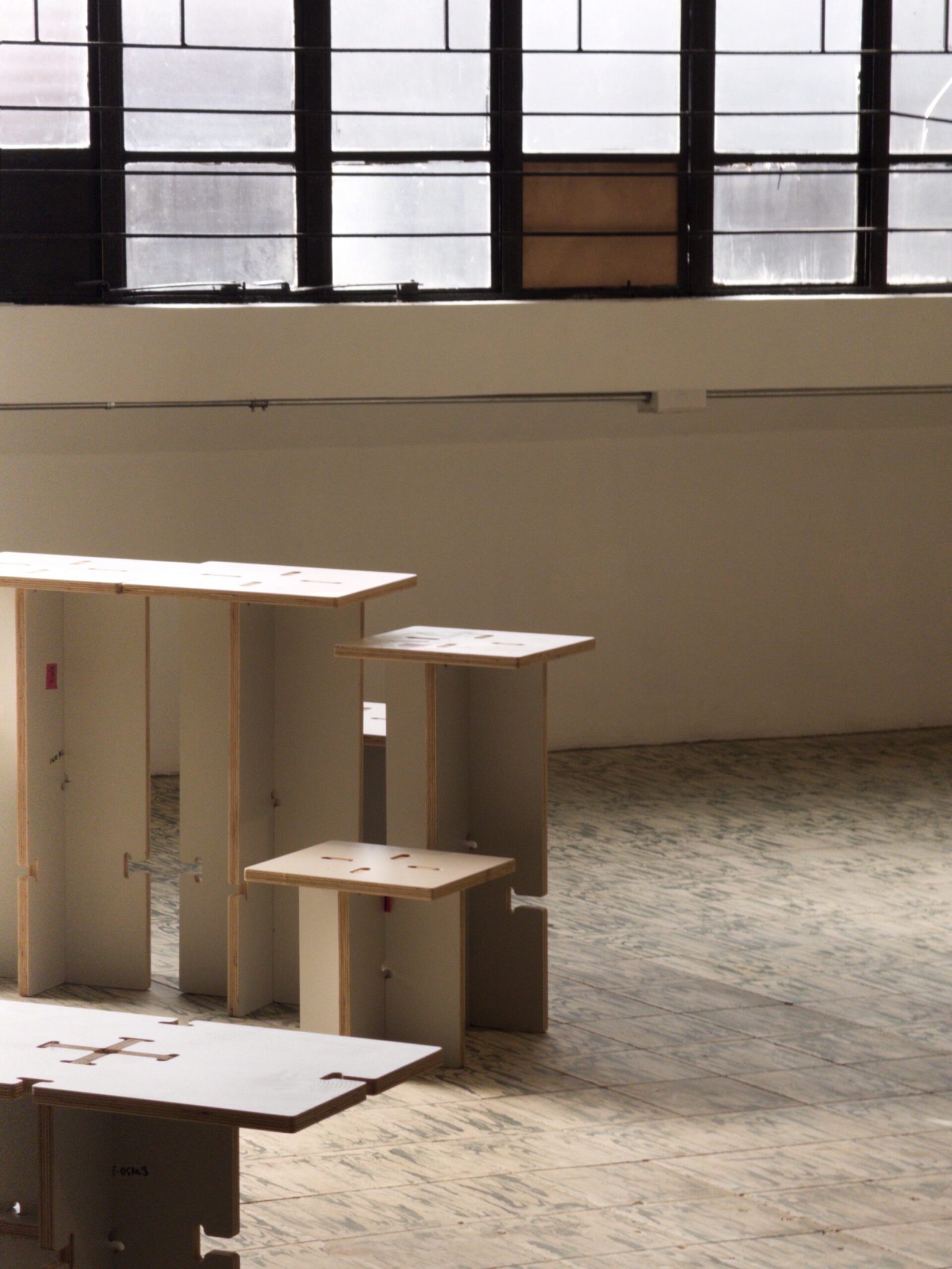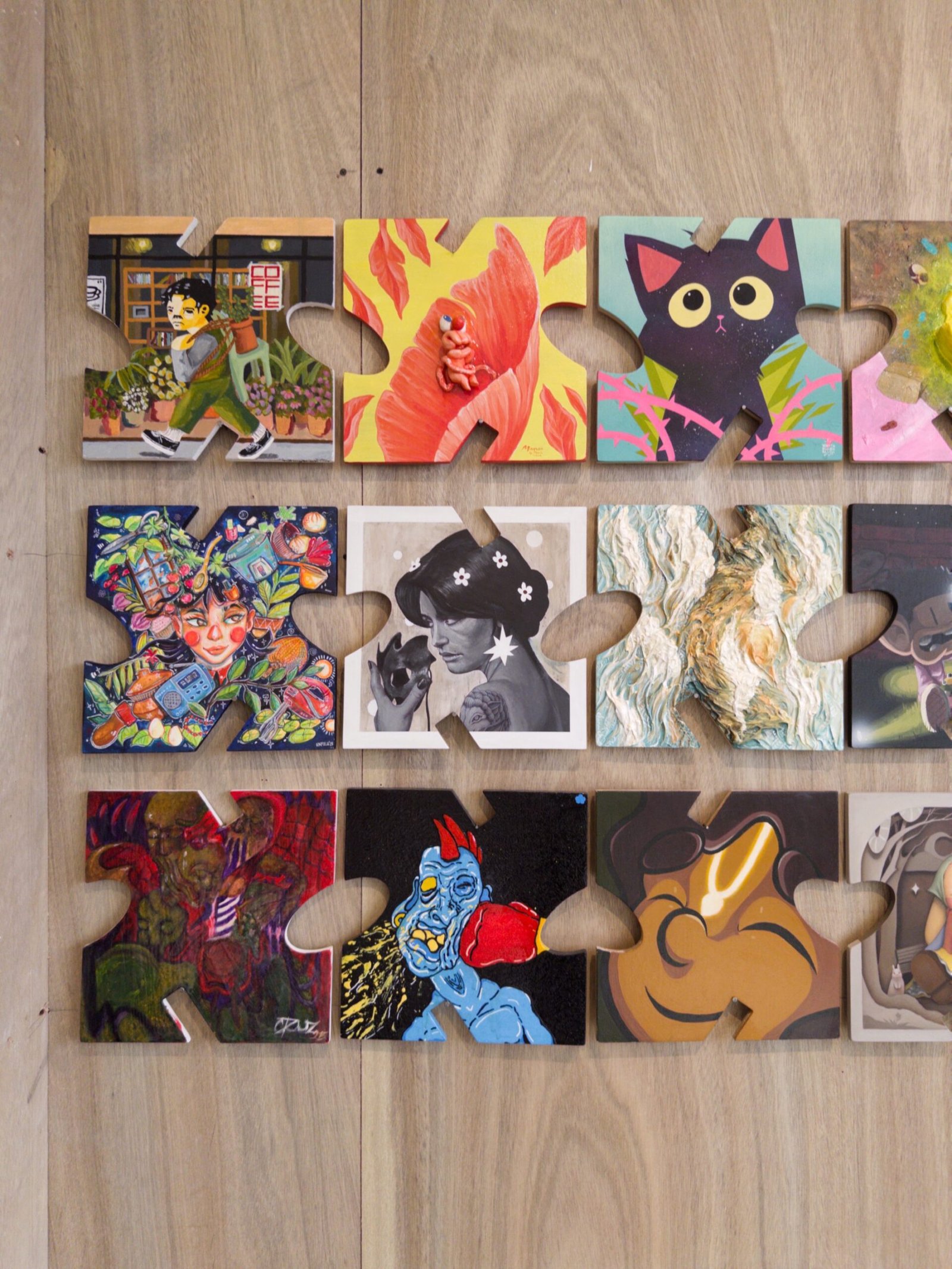Words The Kanto team
Images Patrick Kasingsing (Headroom)
Santa Ana, Manila, a quiet heritage district with its 300-year-old church and a food scene that has bafflingly stayed under the radar, received a welcome jolt of creative energy last November 14. Santa Ana–based practice Headroom brought together the creative community for an art and architecture double bill: TAYO TAYO: Architecture as Act and Process, the latest installment in their Pop-Up Event series, alongside the opening of a new gallery and community space. VeryGood Gallery from Imus, Cavite, took over the second floor, while a hundred plus works by young Filipino artists waited on the third floor, soon to be Headroom’s future community hub. Everything unfolded inside their growing HQ on sleepy Lamayan Street.
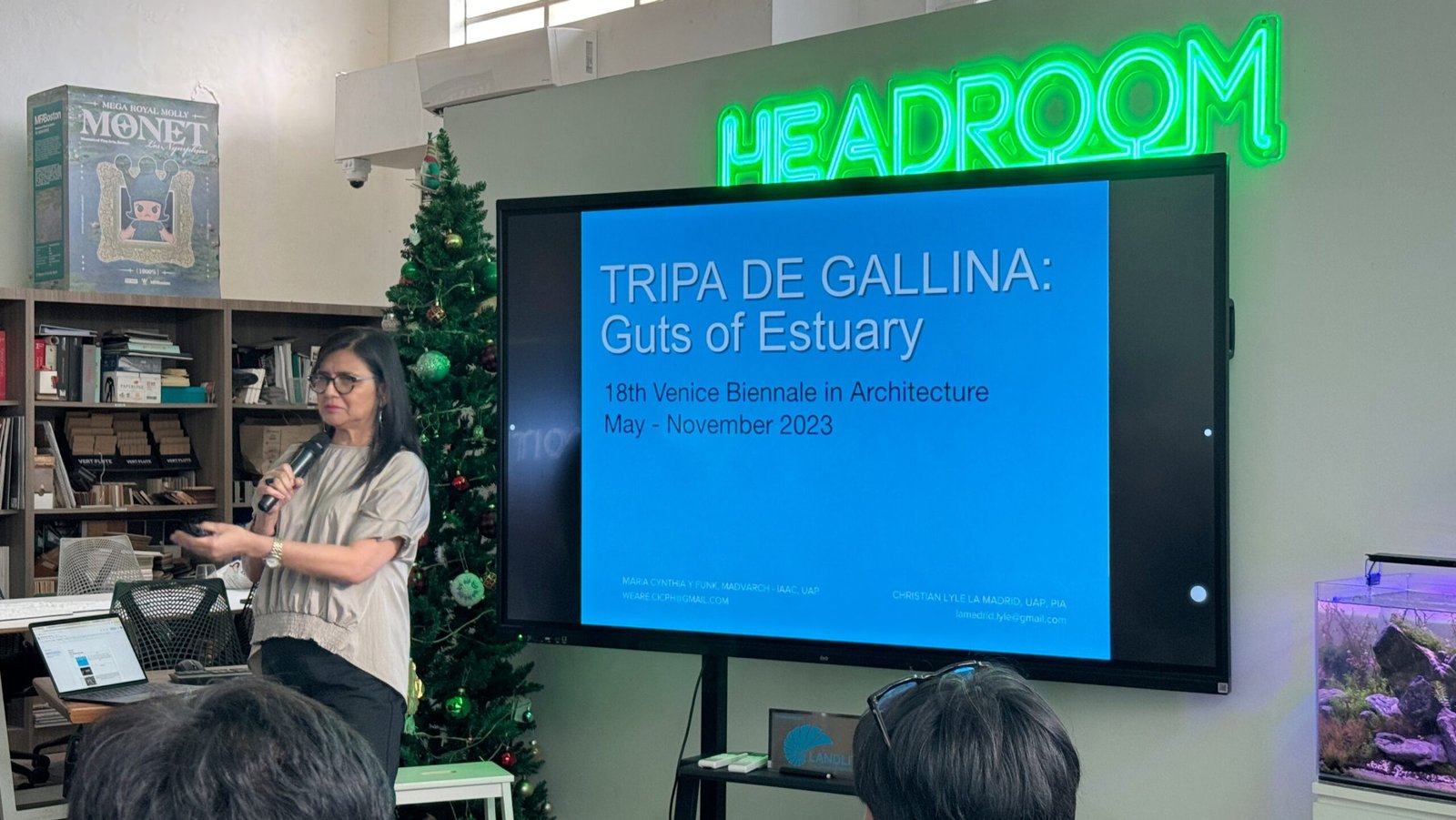
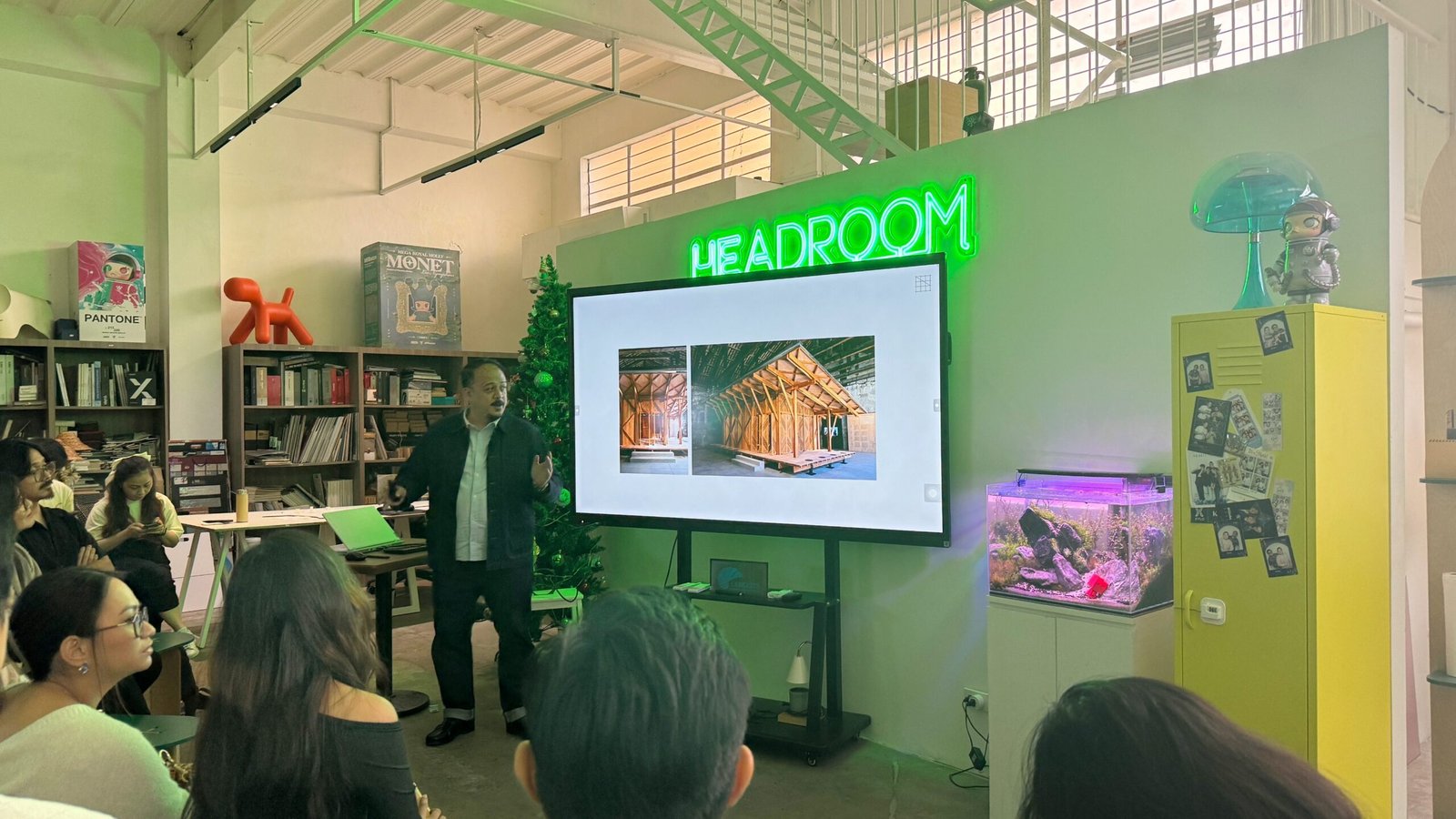
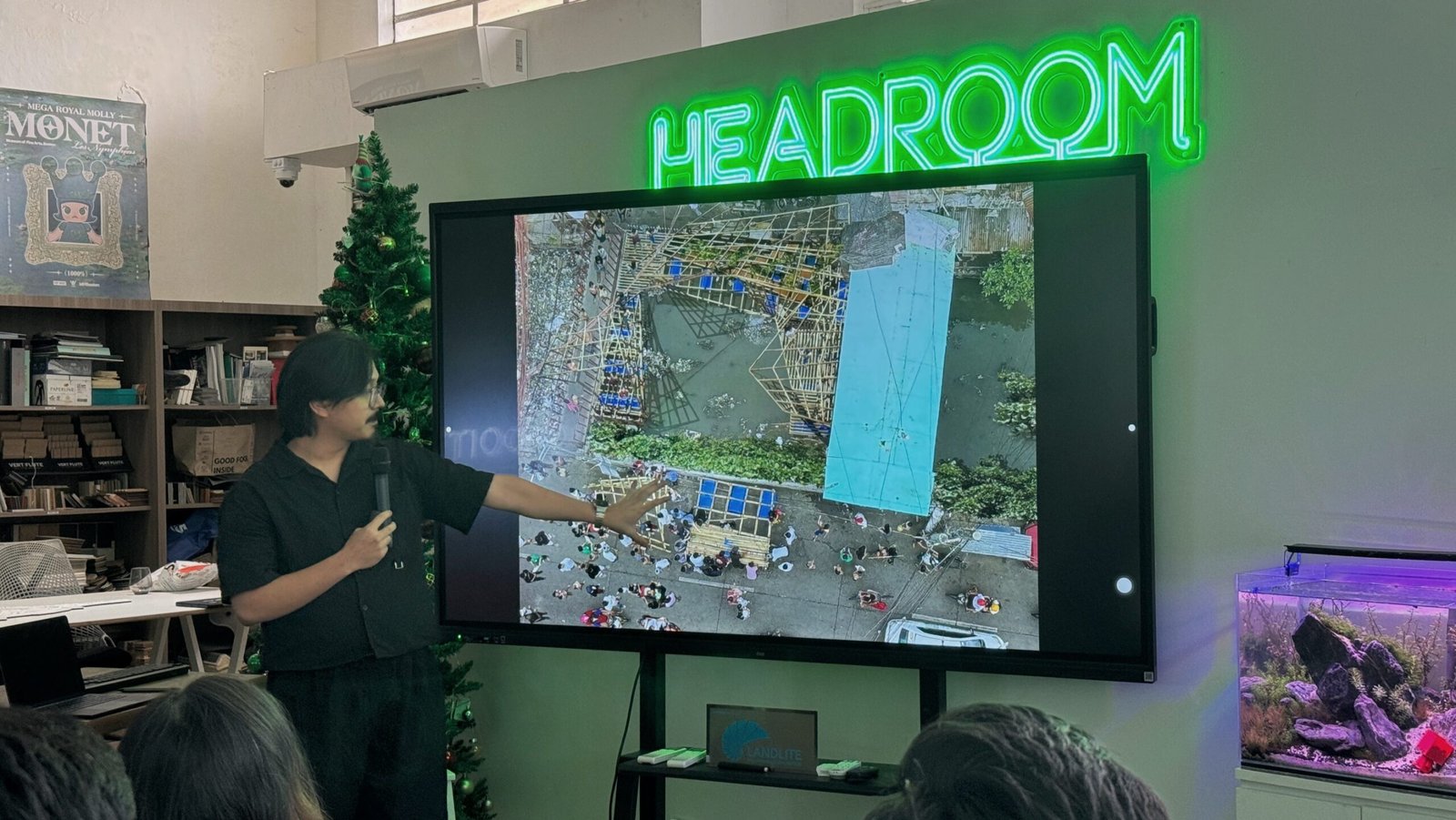
TAYO TAYO opened with a three-speaker program on participative design and how architecture can shape culturally grounded, inclusive communities. The title plays on tayo (us) and magtayo (to build). Architects and Venice Biennale alumni Choie Funk and Lyle La Madrid unpacked the story behind their 2023 pavilion, Tripa de Gallina: Guts of an Estuary, to a packed room. What began as an annual school activity between Benilde and IAAC Barcelona evolved into years of immersion along the seven-kilometer waterway, Manila’s longest estuary.
“Our goal was not to impose solutions,” Funk said. “Architects… we should learn to listen more and dialogue before we create.” She described Tripa de Gallina as “a microcosm of Manila’s urban conditions,” where survival, ecology, and culture collide. La Madrid explained that bamboo was chosen for the pavilion because it was practical and uncomplicated, accessible for the community that would build and use it. He walked the audience through the tech and logistics side: Rhino, Grasshopper, a one-month fabrication sprint, and a swift one-week installation. Arguably, the harder challenge was bringing the pavilion back home to Tripa de Gallina, the community that brought forth its creation, a process now slowly moving forward with the MMDA.
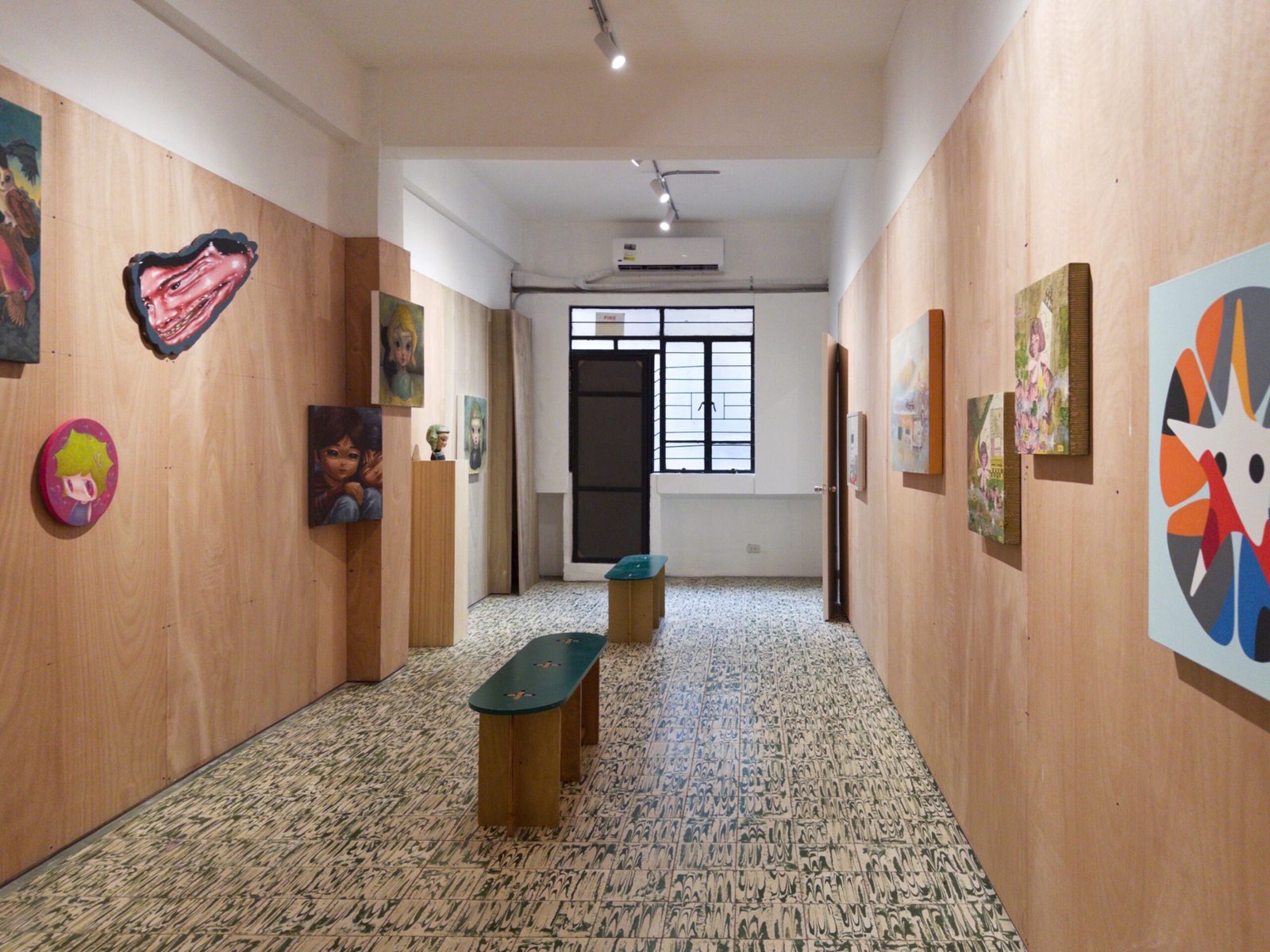

Next was Sudarshan Khadka of Locsin and Framework Collaborative, presenting Structures of Mutual Support, designed with partner Alexander Furunes. Their Biennale pavilion emerged from a three-year collaboration with a community that didn’t speak the language of architecture. “We had to create a common language,” he said. Mockups, dollhouses, and role-playing exercises made design something everyone could grasp and shape. Materials were sourced locally, from Bulacan timber to steel from nearby welding shops, all built with labor from the neighborhood. The structure eventually flew to Venice, where it earned the Philippines its first Special Mention. Khadka then shared case studies from Vietnam, Brazil and Norway that showed how architecture can function as an ongoing conversation instead of a static object.
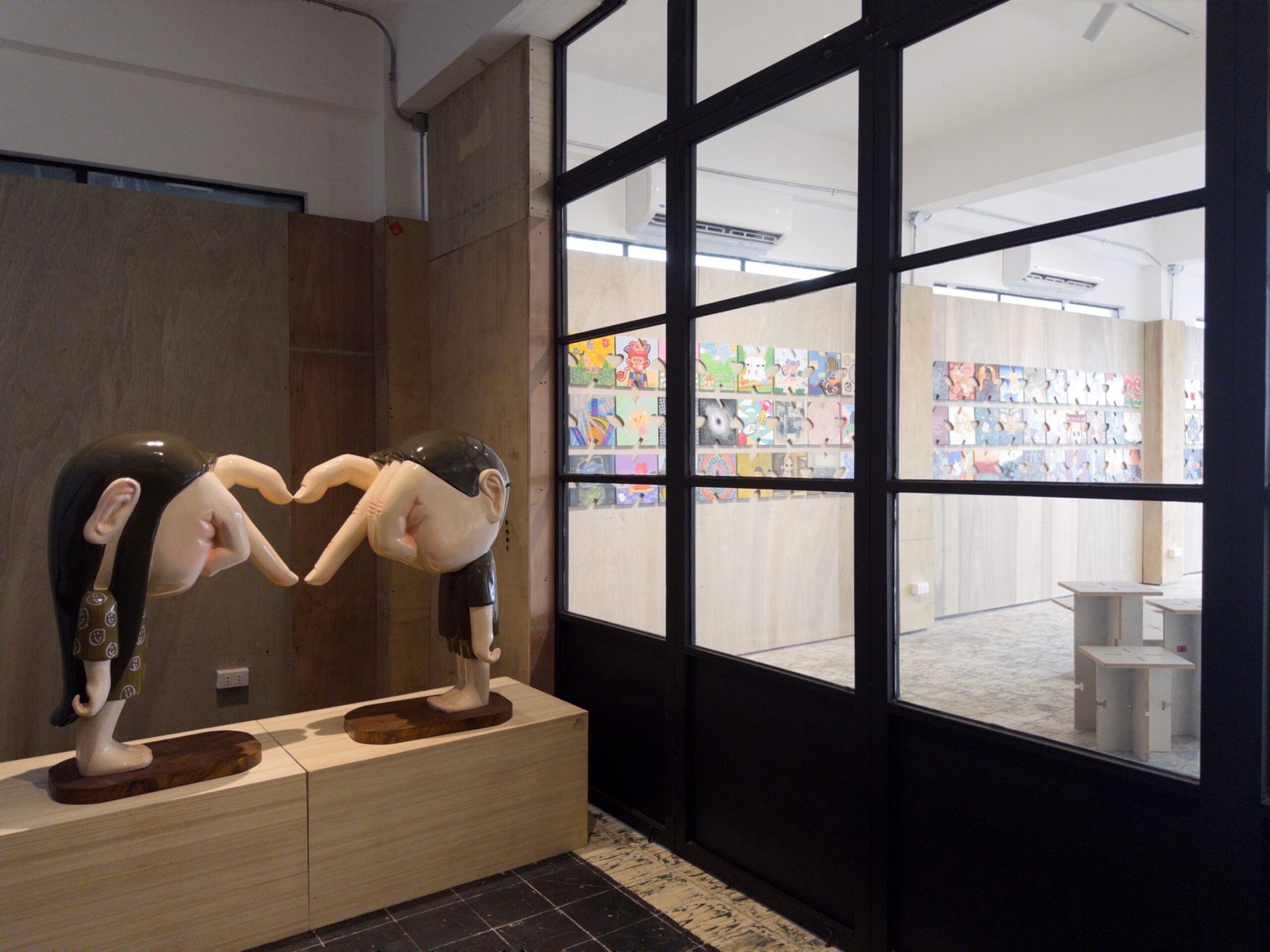

The Q&A delved into the complexities of collaborative design, a thread that linked all three speakers. “If your intentions are clear, solutions will appear,” Khadka said. He echoed Funk’s framing of architecture as activism and an active search for problems worth solving. When someone asked how to keep advocating for participative design in a society weighed down by corruption, bureaucracy, and the usual sense of helplessness, the three speakers returned to the same answer: “Our desire to volunteer is our power.”
The Q&A wrapped, and the program shifted from brain food to eye candy with PUNTAHAN, a one-day takeover of Headroom’s new gallery and community space. VeryGood’s month-long art exhibit ran on the second floor, billed as a gallery space. Outside the HQ walls, live art sessions unfolded with Ram de Verdera, CHNO, Cel Ramos, Regino Abino, and BLIC (represented by VeryGood Gallery) painting as crowds drifted between murals in progress and manong’s fishball and gulaman cart. Up on the third-floor community space, 162 artists’ unsigned works hung side by side on four-spoked modular canvases designed by Headroom partner Kevin Nieves. Established names were mixed alongside fresh talent for this one-day art sale. Buyers lined up for pieces by artists like BLIC, Ryan Jara, Rene Cuvos, Wipo, and Reen Barrera, priced from ₱2,000 to under ₱30,000, with all proceeds going to the artists.


The program stretched from 2 p.m. to past 9 p.m., attracting 500+ attendees, pushing through payday traffic, city noise, and the simmering tension Filipinos have been carrying lately. I am reminded of Khadka’s closing line from the forum: “Huwag tayo magpatalo sa indifference and despair (Don’t surrender to indifference and despair).” It was a call for defiant hope, for designers, artists, and communities to continue building, despite the growing darkness. Headroom partners Kat Clemente, Andrew Trinidad, and Kevin Nieves, along with their team, surely took that to heart. •
